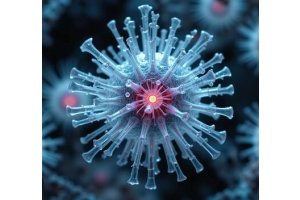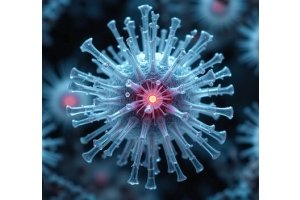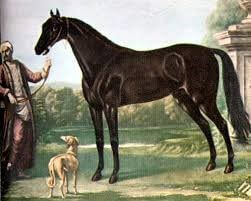
The thoroughbred sire Brave Mansonnien, a rare genetic
The three founding stallions of the English thoroughbred breed are of foreign origin: Darley Arabian comes from Syria where he was acquired by an English merchant named Thomas Darley; Godolphin Arabian came from Morocco and had been offered to Louis XV by the caliph, he was then bought by the Englishman Edward Coke, while he was used to pull carts; Byerley Turk was a horse used by the Ottoman army, captured by an English soldier ...
The Male line of Byerley Turk 
The legend of Byerley Turk
The dark bay stallion was captured by the English captain Robert Byerley in 1687 during the siege of Buda (Hungary) by the Ottomans - hence its original name: Byerley's Turk. The soldier had noticed this very beautiful and very fast little horse. According to the legend, the stallion was also so fast and fiery that it took several days of tracking to succeed in capturing him. Captain Byerley used it during other campaigns in Ireland where he had been sent under the orders of William of Orange. The stallion was used for breeding when the captain retired to his mansion in Goldsborough, England after leaving active duty. He was quickly noticed for his ability to produce racehorses. His best son is probably Basto, born in 1702 or 1703. Purchased by the Duke of Devonshire, Basto wins very good races and is described as "remarkably strong" and with "an appearance of pride and spirit". The Byerley Turk's production also includes Grasshoper, winner of the Town Plate in Nottingham, and Black Hearty, popular at the time. Ranked among the 3 founding stallions of the thoroughbred breed, The Byerley Turk has been assimilated "Arab" for historical convenience. Indeed, this one would however come from the Akhal Teke, originally from Turkmenistan. The Byerley Turk died at Goldsborough Hall in 1706 and was buried nearby.
Herod 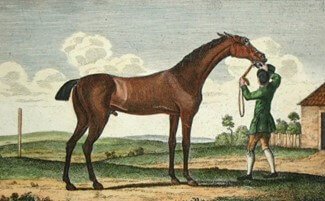
The male line of Byerley Turk persisted in producing a major stallion every few generations, the sons of which would create their own branches. However, most of these branches have disappeared over time (in male lines). But Herod (or King Herod) can be considered as the prominent. Byerley Turk (1680) fathered Jigg in 1705, who gave Partner in 1718, who produced Tartar in 1743, who fathered Herod in 1758. Herod was top stallion in Great Britain and Ireland from 1777 to 1784. Note that Cypron, Herod's dam was by Blaze, a grandson of Darley Arabian. Herod fathered Highflyer in 1774, the best stallion in Britain from 1785 to 1796. The Highflyer line has persisted for many generations but died out in the first half of the 20th century. Herod also fathered Florizel born in 1768, who fathered Diomed (1777). Diomed was to become a founding father of American turf. Diomed in turn fathered Sir Archy, who was the first grand sire of stallions in the United States. A few generations later, thanks to the line of Sir Archy, Lexington became the "leading sire" in North America sixteen times in the middle of the 19th century, but his line died out at the end of the 20th century.
Sultan
Herod's lineage continued through Woodpecker, born in 1773, who fathered Buzzard (1787). Buzzard founded several lines of stallions that flourished in the 19th century, most of which withered in the 20th century. The male line of Buzzard however continued through Selim, chestnut foal born in 1802, who was crowned best stallion in England in 1814. Selim also produced a line of flourishing stallions, most of which however disappeared in the middle of the 20th century, except through Sultan, born in 1816. Sultan has been crowned best stallion 6 times. Sultan had had a good career, winning 14 races including the Gold Cup at Newmarket.
Flying Dutchman 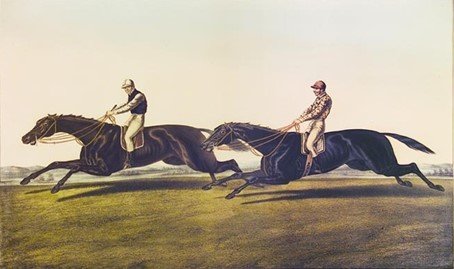
Sultan gave Bay Middleton (1833) top stallion in 1844 and 1849. Bay Middleton fathered several lines, extincted in the middle of the 20th century, but the male line of Bay Middleton continued through The Flying Dutchman, born in 1846. The Flying Dutchman has won all but one of its races, including two classic races (Derby and St. Leger), as well as the July Stakes in Newmarket, the Champagne Stakes in Doncaster, the Bickerstaffe Stakes in Liverpool, the Belvoir Stakes, the Russian emperor Plate (now replaced by the Ascot Gold Cup) and a famous match of 1000 guineas against Voltigeur. He gave Ellington (winner of the Derby), Flying Duchess (mother of Galopin, father of St. Simon) and Dollar. The Flying Dutchman lineage continued through Dollar, born in 1860, who fathered Androcles in 1870, who fathered Cambyses in 1884, who produced Gardefeu in 1895, then came Chouberski in 1902, who sired Bruleur in 1910, who finally fathered Ksar in 1918.
Ksar, 1921 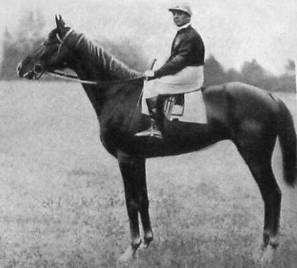
Ksar, winner of the Prix de la Salamandre at two, largely dominated his contemporaries at the age of three and four. In 1921, he linked the Prix Hocquart, the Prix Lupin, the Prix du Jockey Club, a first Prix de l'Arc de Triomphe and the Prix Royal Oak. The following year, the Prix of the President of the Republic (future Grand Prix of Saint-Cloud), the Prince of Orange, the Cadran and the Sablons fell into his pocket. But above all, he was the first to keep his title in the Prix de l'Arc de Triomphe, becoming the first of eight horses to achieve this feat. He retired with 11 wins in 15 races. Ksar sired Tourbillon in 1928.
Tourbillon, winner of the Jockey club and the Prix Lupin, was three times the best stallion in France. His son Djebel, born in 1937, in 22 starts, won 15, placed three times second and once third. His victories include the Prix de l'Arc de Triomphe of 1942, the 2000 Guineas (GB), the Prix des Sablons, the Prix Boiard (twice), the Prix d'Harcourt (twice), the Prix d'Hédouville (twice), the Grand Prix de Saint-Cloud, Prix d'Essai, Prix Lagrange and the Middle Park Stakes. He finished second in the Prix Morny, the Grand Prix de Saint-Cloud and the Prix de Chantilly, and third in the Prix de l'Arc de Triomphe in 1941. Djebel is the sire of My Babu, which also won the 2000 Guineas. The My Babu line has persisted for several generations, especially in Australia via his son Better Boy, where he has been top of the list 4 times. Djebel also sired Clarion, born in 1944, who, although less efficient than My Babu on the track, is the best hope for the survival of the stallion line Byerley Turk in Europe.
Luthier 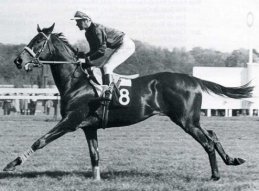
Clarion fathered Klairon in 1952, whose son Luthier was top-sire four times in France. Luthier won important races in France, but he is remembered especially as a sire of sires and a Dam’s sire. Retired at the stud farm in 1970 at the Haras d'Etreham in Normandy, he was top of the stallions list in France in 1976, 1982, 1983 and 1984, and father of sixty-one Group winners. Among his notable offspring, Luthier sired Sagace, winner (downgraded) of the Prix de l'Arc de Triomphe 1984 and the filly Riverqueen whose victories at the age of three in 1976 included the Grand Prix de Saint-Cloud, the Poule d'Essai des Pouliches and the Prix Saint-Alary. Luthier was also the sire of Saint Cyrien, the 2-year-old champion 1982 in France and leading stallion in France in 1990. Luthier was the best dams’s sire in France eight times with ninety-six group winners.
Luthier's sire line continued via Tip Moss and Mansonnien (1984), top sire over jumps and best dam’s sire on several occasions, then BRAVE MANSONNIEN and Diamond boy (Exported to Ireland), and, via No lute, through Video rock, very present in the jumping pedigrees and his only stallion son Kap Rock.
Brave Mansonnien 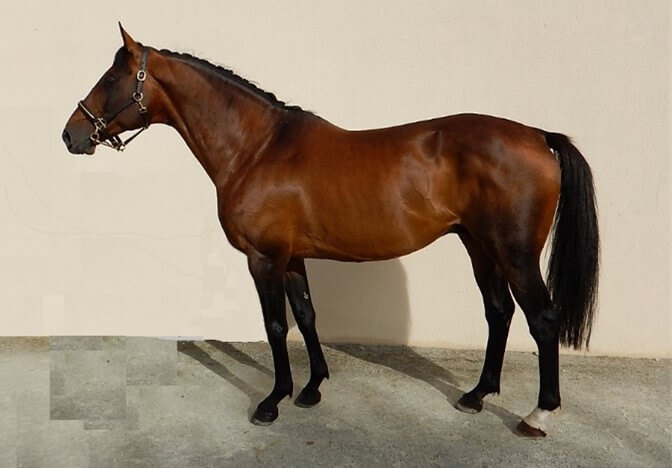
Klairon also sired Lorenzaccio in 1965, who gave Ahonoora in 1975 Ahonoora has proven to be a success at the stud farm in UK, with descendants including Don't Forget Me (2000 Guineas), Dr Devious (Epsom Derby) and Indian Ridge who in turn has several sons and grandsons still at the stud. Another son of Ahonoora, Inchinor, fathered Notnowcato in 2002.
Note that focusing on the male line underestimates the influence of Byerley Turk: a detailed analysis of the studbook shows that he has a higher percentage of blood in the modern thoroughbred than the other founding stallions





